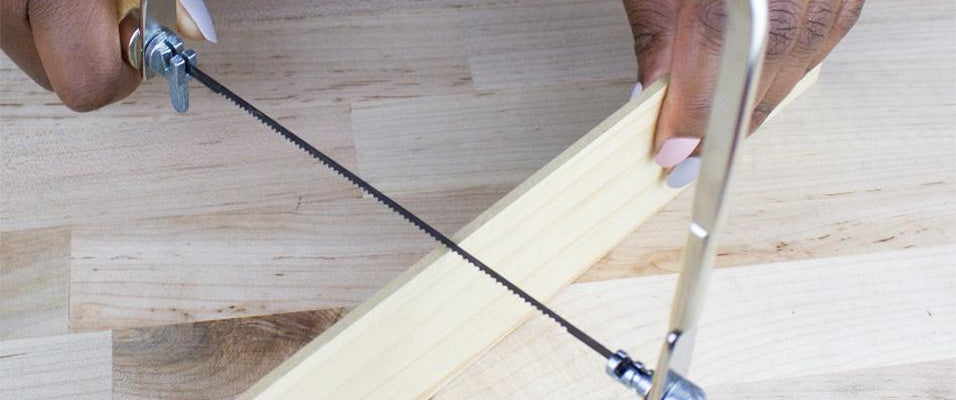
How to Use a Coping Saw
What is a coping saw?
To understand how to use a coping saw, we must first discuss what a coping saw is. A coping saw was mainly invented to “cope” or “saw” the crossings between two surfaces to allow them to fit together seamlessly. With a coping saw, you can cut out any intricate shape in wooden materials or make curved trims for your roof eaves.
A coping saw is a C-shaped, steel frame with screw holders that capture pins on the ends of the blade. Adjusting the thumb screws on the coping saw handles will allow for exact tension of the blade and result in smoother curved cuts for your projects.

What is it commonly used for?
A coping saw is used for many projects and on materials such as wood, plastic, tile and even some metals! People commonly use coping saws to form different shapes when they are undertaking woodworking or carpentry projects. Its small structure allows it to move through the materials with more accuracy to create detailed shapes such as oval, rectangular, circular and so on.
You don't need to turn to a power tool for your projects. A coping saw offers unique abilities for cutting smaller pieces. The Excel Blades coping saw collection consists of lightweight saw blades crafted for the projects that require more power and precision than most saw blades you will find at a tool shop.
How to use a coping saw:
Step 1: Install the blade
Excel Blades’ coping saw blades come in several teeth sizes. To remove an old blade, you will need to hold the handle with one hand and the thumbscrew directly above the handle with the other hand to keep the screw in place. Loosen the handle by turning it towards you until it is fully released. The handle will detach from the frame and the blade will come out.
To put in a new blade, attach one end to the spigot that is farthest from the handle and then place the other end in the other spigot. Then, take the screw and place it through the hole to screw the handle back on. Use the thumbscrew at the top of the saw to adjust the tension of the blade as needed.
Step 2: Secure the material
You will need to keep the material you are working with in place to prevent it from slipping as you cut. A clamp is a mainstay in any professional DIY kit. These indispensable tools of the trade are your new go-to for assembling, holding and securing objects securely in place during your project. Excel Blades offers several clamps to choose from and they are perfect for any job.
Step 3: Trace and Cut
It is important that you trace a line onto the material you want to cut before you begin cutting. Once your material is securely clamped and your line is traced, you may begin sawing. Place the center of the saw’s teeth at the start of the line and push with short strokes.
Step 4: Continue Sawing
Keep sawing perpendicular to the wood, staying in line with the pattern you have drawn. As you cut, the handle allows you to rotate the blade 360 degrees in any direction needed to follow your drawn pattern.
Note: If you are sawing through molding, you will need to make several cuts and perhaps start at the opposite end to cut all the way through.
Tips when shopping for a coping saw:
- When shopping for a coping saw, look for a frame that is lightweight, rigid and strong. This will be what is holding the blade in place.
- Wooden handles are the most comfortable and easy to use. Seek a handle that can be screwed in, like the ones we sell at Excel Blades.
- Coping saws are sold with only one blade; however, Excel Blades offers replacement coping saw blades in a four-pack.
- Choose your blades according to the type of material you plan on cutting and the thickness of the piece.

Unlike a miter saw and other woodworking tools, coping saws do not have the ability to cut through thick, high-density materials. However, the tool’s thin blade can be adjusted from many angles. They are used to make accurate, straight cuts that cannot be achieved with other tools. Therefore, a coping saw is an irreplaceable tool that is frequently utilized in both professional and amateur woodworking workshops.
We hope you enjoyed learning how to use a coping saw. Check out our coping saw collection that we offer at Excel Blades and get crafting today.
You May Also Watch: K60 Revo Folding Utility Knife Blade Change